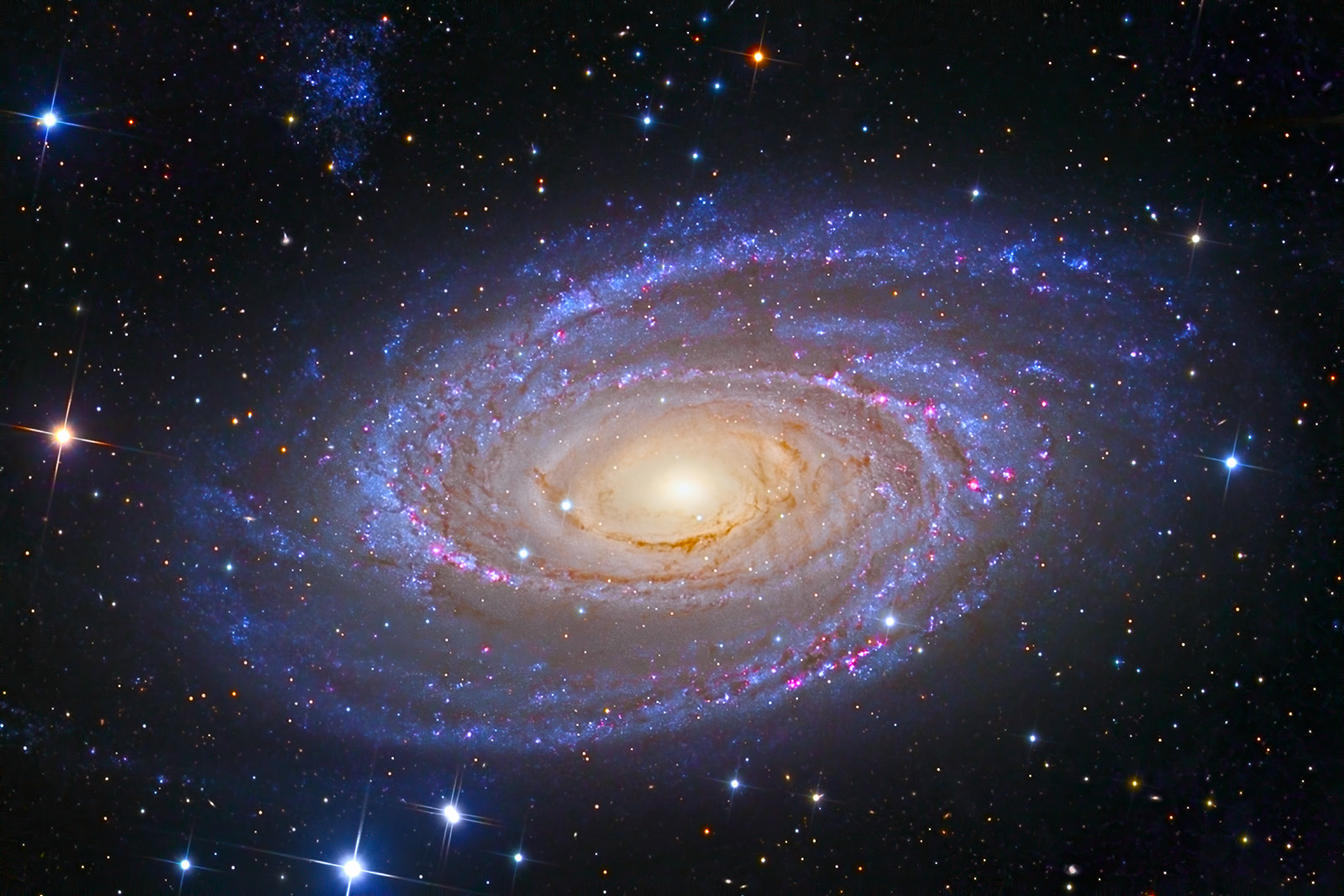
 |
Spiral Galaxy M81 |
|||||||||||||||||||||
About This PhotographIn the constellation of Ursa Major at a distance of about 12 million light years, we find this fabulous example of a spiral galaxy. This is a popular target for amateur astronomers, as it is easily visible with even a small telescope. As with many spirals, we can trace the ages of the different parts of the galaxy by their color. Concentrated around the core are the older stars, the long-burning yellow suns. Out in the spiral arms we find the younger stars, so hot they shine with a bluish light. Many of these stars are so massive and burn their fuel so quickly that they will live only a few million years before exploding in brilliant supernovas. Speckling the spiral arms we also find patches of magenta, signifying regions where new stars are just beginning to shine, causing the gas and dust around them to glow in this characteristic color. Along the upper edge of the photograph, you may notice a curious blue patch of stars, altogether separate from the main body of M81. This object is known as Holmberg IX, after the astronomer who studied it and similar objects. It is a small, satellite galaxy of M81, similar to our Milky Way’s Large and Small Magellanic Clouds. | |||||||||||||||||||||
|
|||||||||||||||||||||